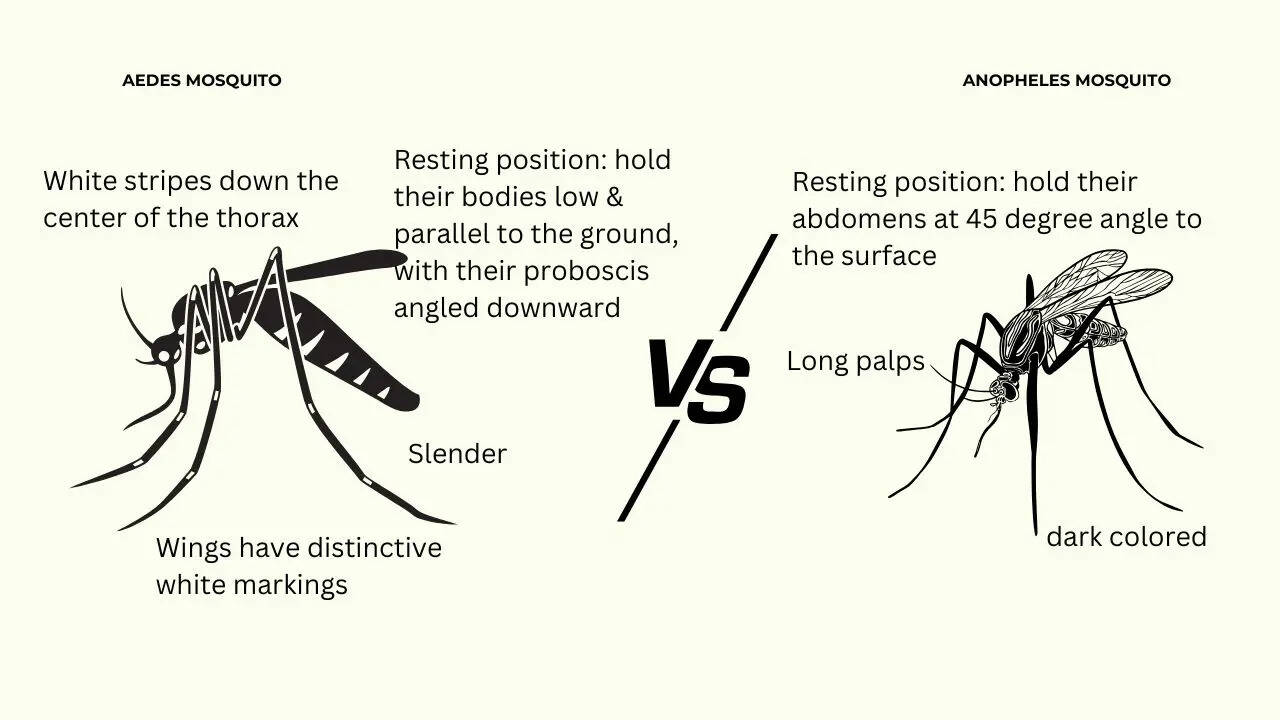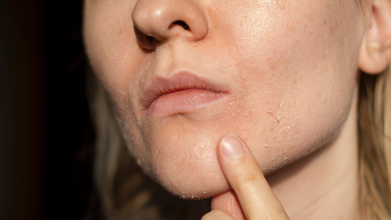- Health Conditions A-Z
- Health & Wellness
- Nutrition
- Fitness
- Health News
- Ayurveda
- Videos
- Medicine A-Z
- Parenting
World Malaria Day: What Makes Malaria Different From Other Mosquito-borne Diseases?

Credits: Canva
On the day of World Malaria Day, as we raise awareness on the dangers posed by this mosquito-borne disease, let's delve a bit deeper into how malaria is different from the other mosquito-borne diseases.
Dengue vs Malaria
Both malaria and dengue are transmitted by female mosquitoes and cause severe illness in humans. There are certain similarities between the two diseases and the mosquito species, which is why the patients and diagnoses are often confused.
As per the co-Principal Investigator, Dr Charles Guissou, for the Target Malaria, a vector control research alliance's Target Malaria Burkina Faso at the Institut de Recherche en Sciences de la Santé, "Dengue and malaria are two very different diseases caused by different pathogens and different mosquito species." “Misdiagnosis between malaria and dengue is common, and this can then contribute to inappropriate medical care.”
Every year, malaria causes 200 million cases worldwide, leading to 600,000 deaths. Many of these cases are from Africa, where children and pregnant women pay the highest price. The World Health Organization (WHO) has also reported that in 2022, Africa was home to 95% of malaria cases and 95% of malaria deaths. The global incidence of dengue has grown significantly in recent decades. Cases reported to WHO increased from 505,430 in 2000 to 6.5 million in 2023.

Dr Ajay Gupta, Head & Director - Internal Medicine, Max Super Speciality Hospital, Vaishali also points out the key differences between malaria and other mosquito-borne diseases. He says, "Malaria is caused by Plasmodium parasites, transmitted through the bite of infected Anopheles mosquitoes. In contrast, dengue, chikungunya, and Zika viruses are transmitted by Aedes mosquitoes. This distinction in the type of mosquito also reflects differences in peak biting times—Anopheles mosquitoes bite during nighttime, while Aedes mosquitoes are daytime biters."
"Another key difference lies in complications and disease progression. Malaria, especially caused by Plasmodium falciparum, can progress rapidly to severe illness with cerebral involvement, anemia, kidney failure, and even death if not promptly treated. Dengue, on the other hand, is known for a sudden drop in platelet count and risk of hemorrhage. Chikungunya commonly leads to prolonged joint pain, sometimes lasting weeks or even months after the infection clears," notes the doctor.
There is also a difference between how the mosquitoes that spread dengue and malaria.

The Aedes Mosquito
It is responsible for spreading dengue and has white stripes down the center of the thorax. It also has a resting position where its body is kept low and parallel to the ground, with the proboscis angled downward. It is slender, and the wings have distinctive white markings.
The Anopheles Mosquito
It is responsible for causing malaria and has long palps. It is dark in color and the resting position follows it abdomen at a 45-degree angle to the surface.
Zika Virus
Zika is a viral infection also transmitted by Aedes mosquitoes, which is the first difference from malaria, in the species of mosquito that causes it. As per the WHO, those with Zika virus do not tend to experience symptoms, and if they do, it includes rash, fever, conjunctivitis, and muscle and joint pain. The symptoms are also what makes it different. They appear from 3 to 14 days after being bitten.
Chikungunya
This is also caused by Aedes mosquitoes, and the symptoms usually appear within 4 to 8 days after infection. The symptoms include fever, joint pain, headaches, and nausea.
Yellow Fever
This is caused by Aedes and haemagogus mosquitoes. People who are infected with this virus do not get sick and experience only mild symptoms. As per the Centers for Disease Control and Prevention (CDC), 12% of people who have symptoms develop serious illness, which includes organ failure and jaundice.
The key difference between all other mosquito-borne diseases and malaria is the species of the mosquito that causes it. While all the others are caused by Aedes, malaria is caused by the Anopheles.
What Else Makes Malaria Different Other Than The Type Of Mosquito That Causes It?
Drinking Beer Could Increase Chances Of Infection
According to the scientists at the University of Emory, in their 2010 study, they found that beer produces an odour in your body that is irresistible to the malaria-carrying mosquitoes.
It Could Take Four Years To Develop Symptoms
There are rare strains of this disease which could in fact take months or even years to get diagnosed. In one of the rare cases, malaria was diagnosed four years later the individuals were infected, reported UK's The Telegraph.
Malaria And Its Connection With Snow White
In 1943, Disney was tasked with creating a film to promote public health awareness. The result? The Winged Scourge — a rather unusual PSA where the Seven Dwarfs learn how to fight off malaria-spreading mosquitoes.
Malaria Has Killed Four Popes, And At Least Eight Presidents Have Suffered From It
George Washington battled malaria, and the disease is also believed to have claimed the lives of Pope Leo and Pope Sixtus—just a few of its prominent victims.
Malaria And India
The doctor also points out that diagnosis and treatment also vary. "Malaria is typically confirmed with a blood smear or rapid diagnostic test and is treated with specific antimalarial drugs. There is no antiviral treatment for dengue, chikungunya, or Zika—management is primarily supportive," he says.
In India, we often see a spike in these illnesses during and after the monsoon season, However, malaria control efforts—such as early diagnosis, insecticide-treated bed nets, and vector control—have significantly reduced the burden in recent years.
"Preventive strategies like eliminating stagnant water, using mosquito repellents, and ensuring proper sanitation are universally effective. But recognizing the distinct nature of malaria is key to prompt diagnosis and management," notes Dr Gupta.
Working Out For 10 Minutes May Decrease Your Risk Of Colorectal Cancer, Study Proves

Credit: Canva
Performing short and intense exercises that last for about 10 minutes may significantly reduce the risk of colorectal cancer, a British study shows.
Researchers at Newcastle University have found that completing brief workouts increases the concentration of several small molecules in the blood that have previously been linked to reducing inflammation, improving blood vessel function and metabolism.
The findings, which were published in the International Journal of Cancer, also noted that even short bouts of exercise can influence the activity of genes that govern tumor growth and fight against cancer.
Dr Sam Orange, Senior Lecturer in Clinical Exercise Physiology at Newcastle University and lead study author, said of the results, "What’s remarkable is that exercise doesn’t just benefit healthy tissues, it sends powerful signals through the bloodstream that can directly influence thousands of genes in cancer cells.
“It’s an exciting insight because it opens the door to find ways that mimic or augment the biological effects of exercise, potentially improving cancer treatment and, crucially, patient outcomes.
“In the future, these insights could lead to new therapies that imitate the beneficial effects of exercise on how cells repair damaged DNA and use fuel for energy.”
How Does It Work?
The study involved 30 participants, both male and female between the ages of 50–78. All of the participants were overweight or obese (a risk factor of cancer) but otherwise healthy.Researchers had asked each volunteer to complete a short, intense cycling test that lasted about 10 minutes and collected each of their blood samples which were then meticulously analyzed.
After studying about 249 proteins, the experts found nearly 13 protein had increased in their blood flow after the short exercise including interleukin-6 (IL-6), which helps repair the DNA of damaged cells.
When these exercise-induced proteins were applied to colorectal or bowel cancer cells by the scientists in a lab, they discovered that these new proteins could alter the activity of over 1,300 genes, particularly those who were responsible for DNA repair, energy production and cancer cell growth.
As a result, they concluded that performing even small exercises can activate a set of genes in the body's cells that can support efficient use of oxygen and promote energy metabolism. Additionally, the British researchers also discovered that the cell genes which have been previously associated with rapid cell growth were switched off after working out, suggesting that this might aid in controlling cancerous growths in the body.
What Is Colorectal Cancer?
Colorectal or bowel cancer is a common cancer that forms in the tissues of the colon (large intestine) or rectum, often starting as non-cancerous growths called polyps that turn cancerous over time.
Despite being treatable and preventable, colorectal cancer is currently the second leading cause of cancer-related deaths worldwide. Over 70,000 new cases of colorectal cancer occur annually in India, making it the fourth most common cancer in the country.
Typical symptoms usually include :
- Blood in or on the stool
- Changes in bowel habits (diarrhea, constipation, narrower stools)
- Abdominal discomfort, cramps, gas, or pain
- Feeling that your bowel doesn't empty completely
- Weakness, fatigue, or unexplained weight loss
Expert Explains: Why Do Allergies And Rashes Increase In Winter? According To Dermatologist

Credits: iStock
When temperature drops, so does the moisture even in your skin. This is what leads to a rash or allergies. In fact, with changes in temperature, and winters, our lifestyle changes too, this could also be the reason why we experience a winter rash, or allergies. To understand this better, Health and Me spoke to Dr Navjot Arora, Consultant Dermatologist, Dermaheal Skin and Clinic at Dwarka, Delhi, who explained that allergies and skin rashes tend to increase during winter due to both, environmental factors and changes in skin health. "Cold temperatures and low humidity levels reduce moisture in the air, leading to excessive dryness of the skin. When the skin becomes dry, its natural protective barrier weakens. This makes it more prone to irritation, inflammation, and allergic reactions."
Why Does Winter Weather Increase Chances Of Rashes And Allergies?
The doctor explains that during winter, people tend to stay indoors more, and it also increases their exposure to allergens like dust mites, mold, pet dander, and chemical fumes from heaters and cleaning products. "Limited ventilation and closed spaces allow these allergens to build up, triggering allergic responses and skin rashes, especially in individuals with sensitive skin or pre-existing conditions like eczema."
Cold weather also affects blood circulation to the skin. Reduced blood flow can slow down the skin’s repair process and weaken its defense against irritants and allergens. As a result, chronic skin conditions such as eczema, psoriasis, and contact dermatitis often worsen in winter, leading to itching, redness, flaking, and rashes.
Lifestyle Changes In Winter
Doctor also points out that during winters, our bathing habit changes. Dr Arora says, "Frequent hot showers strip away the skin’s natural oils, increasing dryness and irritation. In addition, wearing heavy woolen or synthetic clothing can cause friction, sweating, and contact allergies, particularly in skin folds, which can further contribute to rashes."
Common Symptoms Of Winter Rashes
- flushing
- swelling
- itching
- flaking skin
- sensitivity
- bumps
- blisters
If not treated well, or in time, it can develop into more serious health threat, especially if you have a family history of
- eczema or another type of dermatitis
- psoriasis
- rosacea
- allergies
- asthma
- sensitive skin
What Are The Cures To Winter Rashes And Allergies?
The rise in allergies and rashes during winter is largely linked to dry weather, indoor allergen exposure, and skin barrier damage. Maintaining proper skin hydration, avoiding harsh soaps, limiting hot water exposure, and wearing skin-friendly fabrics can help reduce the risk of winter-related allergies and skin rashes.
Moisturizers are usually the first line of care for dry skin because they help trap moisture and prevent further dryness. Apply them multiple times a day, especially after bathing or washing your hands. Thicker options like creams or ointments tend to keep skin hydrated longer than lighter lotions.
Petroleum jelly can also be effective, as it forms a protective barrier that seals in moisture. If you prefer to avoid petroleum-based products, alternatives like Waxelene or Un-Petroleum work in a similar way to reduce moisture loss.
Natural virgin oils, such as coconut oil, may help calm irritated skin and restore hydration. Use them on areas that are not acne-prone, and always do a patch test on a small area for 24 hours before wider application.
Oatmeal-based soaps or oatmeal baths can also help soothe dry, itchy skin. You can buy ready-made oatmeal soaps or add finely ground oats to a warm bath and soak for about 10 minutes.
For itching and inflammation, topical hydrocortisone creams, available over the counter or by prescription, may provide relief. Always follow the instructions on the label or use them as advised by a doctor.
Disclaimer: This is not a substitute for actual prescribed medicine. Please consult a doctor before you purchase any medicine or ointment for your rashes.
Are You Taking Clonazepam? NHS Issues Urgent Safety Advice

Credits: Canva
The NHS has released updated guidance for people who are currently taking clonazepam, a commonly prescribed medicine that belongs to the benzodiazepine group. According to the health service, clonazepam is often used to control seizures or fits linked to epilepsy, ease involuntary muscle spasms, and help manage panic disorders. It is also prescribed in some cases for people with restless legs syndrome (RLS). NHS Inform notes that “around 1 in 10 people experience restless legs syndrome at some stage in their life.”
Explaining how the drug works, the NHS says it increases levels of gamma-aminobutyric acid (GABA), a chemical in the brain that has a calming effect. By boosting GABA, clonazepam can reduce anxiety, prevent seizures or fits, and relax tight or overactive muscles.
Who Can Take Clonazepam?
Clonazepam is only available on prescription and comes as tablets or a liquid. Most adults aged 18 and over can take either form. In certain cases, children as young as one month old may be prescribed clonazepam to treat epilepsy, as per NHS.
That said, there are situations where extra caution is needed. People who are due to have surgery or dental treatment, those who are pregnant, trying to conceive, or who have sleep-related conditions may be advised to stop taking the medicine. However, these are not the only groups the NHS says should be careful.
Clonazepam is not suitable for everyone. Before starting treatment, patients are advised to tell their doctor if they:
- have ever had an allergic reaction to clonazepam or any other medicine
- have myasthenia gravis, a condition that causes muscle weakness
- have sleep apnoea, which affects breathing during sleep
- have lung, liver, or kidney problems
- have spinal or cerebellar ataxia, which can cause shakiness, poor balance, and slurred speech
- have had problems with alcohol or drug use in the past
- have recently experienced bereavement, depression, or thoughts of self-harm or suicide
- have been diagnosed with a personality disorder
- are trying to get pregnant, are already pregnant, or are breastfeeding
- are due to have a general anaesthetic for an operation or dental procedure
What Are The Side Effects Of Clonazepam?
Like many medicines, clonazepam can cause side effects. Common effects, which affect more than 1 in 100 people, include disturbed sleep such as vivid dreams, feeling sleepy during the day, light-headedness, dizziness, unsteadiness, and muscle weakness.
When it comes to long-term use, the NHS warns that clonazepam can lead to withdrawal symptoms if taken for a prolonged period. Because of this risk, people who have been prescribed the drug for more than four weeks may have their dose reduced slowly when stopping treatment, rather than stopping suddenly.
The NHS also stresses that this is not a complete list of side effects. Patients are advised to read the information leaflet that comes with their medicine for full details.
Clonazepam: Serious Side Effects To Watch Out For
Although uncommon, some people may experience serious side effects while taking clonazepam. The NHS advises contacting a doctor or calling 111 immediately if you notice:
- yellowing of the whites of the eyes or skin, which may be less noticeable on darker skin tones, as this could point to liver problems
- seeing or hearing things that are not there, or believing things that are untrue
- problems with coordination or controlling movements
- swollen ankles, a fast heartbeat, coughing, and extreme tiredness, which could be signs of heart issues
- easy bruising, fatigue, nosebleeds, and breathlessness, which may indicate blood disorders
- changes in mood, such as talking more than usual, feeling unusually excited, restless, irritable, or aggressive, which are more likely in children or adults over 65
- Anyone experiencing memory problems, such as difficulty remembering things or amnesia, is advised to book an appointment with their doctor.
In rare cases, clonazepam can trigger a serious allergic reaction known as anaphylaxis.
Disclaimer: This article is for informational purposes only and is not intended as a substitute for professional medical advice, diagnosis, or treatment. Always consult a qualified doctor, pharmacist, or healthcare provider before starting, stopping, or changing the dosage of any medication.
© 2024 Bennett, Coleman & Company Limited

